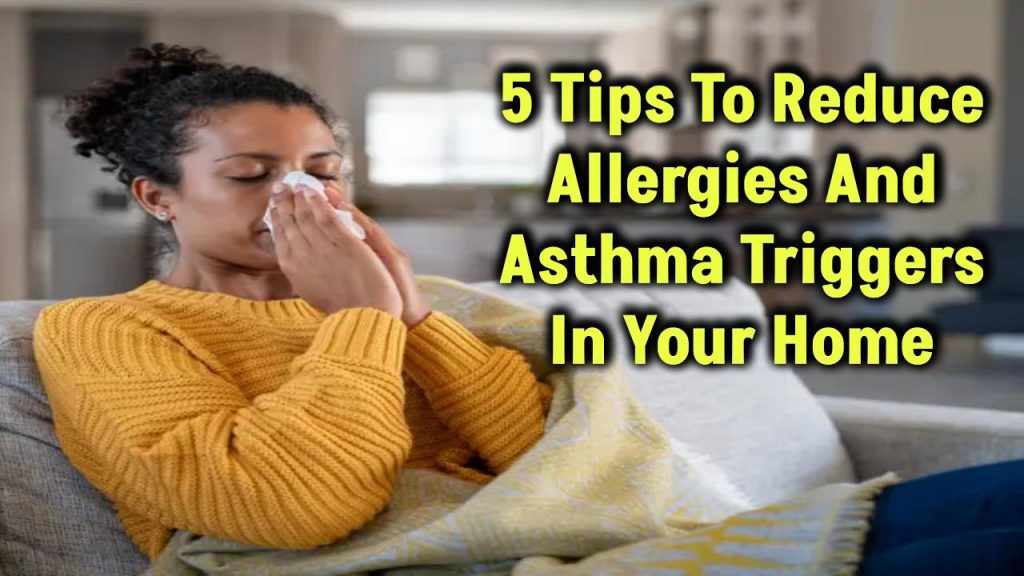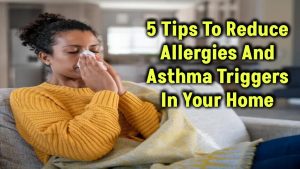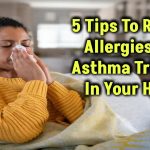
Allergies and asthma can make life uncomfortable, especially when your own home is the main source of triggers. From dust mites and pet dander to mold and air pollution, several allergens can lurk in your living space, worsening symptoms. Fortunately, with a few strategic changes, you can create a healthier indoor environment and breathe easier.
Also Check: Unwind & Recharge: 10 Afternoon Yoga Poses for Deep Relaxation!
Why Reducing Allergens in Your Home is Important
Indoor allergens can trigger sneezing, wheezing, congestion, and respiratory distress, making it essential to control their presence. Studies show that over 50 million Americans suffer from allergies, and 25 million have asthma, with indoor air quality playing a significant role (AAFA). By taking proactive measures, you can significantly improve your quality of life and reduce reliance on medications.
Now, let’s explore five effective strategies to minimize allergens and asthma triggers in your home.
1. Control Dust and Dust Mites
Dust mites are microscopic creatures that thrive in bedding, carpets, and upholstery. They are one of the most common indoor allergens, causing sneezing, itchy eyes, and breathing difficulties.
How to reduce dust mites:
- Use allergen-proof bedding – Encase your pillows, mattresses, and duvets in dust-mite-resistant covers.
- Wash bedding frequently – Launder sheets and pillowcases in hot water (130°F or 54°C) to eliminate mites.
- Vacuum regularly – Use a HEPA filter vacuum to trap fine dust particles and allergens.
- Declutter your home – Remove unnecessary fabric-covered furniture, stuffed toys, and carpets that trap dust.
- Use damp cloths for dusting – Dry dusting can spread allergens, so use a damp cloth for cleaning.
🔹 Pro Tip: Replace heavy curtains with washable blinds or lightweight drapes to minimize dust accumulation.
2. Manage Pet Dander and Fur
Pets can be lovable companions, but their dander (tiny flakes of skin) can trigger allergies and asthma symptoms.
How to reduce pet dander:
- Designate pet-free zones – Keep pets out of bedrooms and main living spaces.
- Bathe and groom pets regularly – A weekly bath can significantly reduce dander.
- Clean floors and furniture – Vacuum carpets and couches frequently with a HEPA filter vacuum.
- Use an air purifier – A high-quality HEPA air filter can capture airborne pet allergens.
- Wash pet bedding frequently – Pet beds should be washed at least once a week.
🔹 Pro Tip: If you have severe pet allergies, consider hypoallergenic pet breeds that shed less dander.
3. Prevent Mold and Mildew Growth
Mold thrives in humid environments and can cause serious allergic reactions and respiratory issues. Controlling moisture levels is key to mold prevention.
How to reduce mold:
- Fix leaks promptly – Inspect and repair leaking pipes, windows, and roofs.
- Control humidity levels – Keep indoor humidity below 50% using dehumidifiers or air conditioners.
- Ventilate damp areas – Use exhaust fans in kitchens and bathrooms to reduce moisture.
- Clean mold-prone areas – Scrub bathroom tiles, basements, and window sills regularly with mold-killing solutions.
- Use mold-resistant paint – This prevents mold buildup on walls and ceilings.
🔹 Pro Tip: Place charcoal or silica gel packs in moisture-prone areas to absorb excess humidity.
4. Eliminate Pollen and Outdoor Allergens
Even if you stay indoors, outdoor allergens like pollen and smoke can enter your home and trigger symptoms.
How to reduce outdoor allergens:
- Keep windows closed during high pollen seasons – Use air conditioning instead of natural ventilation.
- Change clothes after outdoor activities – Pollen clings to fabric, so showering and changing clothes helps.
- Use doormats – Place high-quality mats at entrances to trap outdoor allergens before they spread.
- Wash pets’ paws – If you walk your pet outdoors, clean their paws before they enter the house.
- Avoid line-drying laundry outdoors – Pollen can cling to clothing and bedding.
🔹 Pro Tip: Check pollen forecasts online (AAFA Pollen Count) and plan outdoor activities accordingly.
5. Improve Indoor Air Quality
Airborne pollutants like chemicals, smoke, and volatile organic compounds (VOCs) can worsen allergies and asthma. Enhancing indoor air quality makes a big difference.
How to improve air quality:
- Use HEPA air purifiers – These remove up to 99.97% of airborne particles, including allergens.
- Avoid strong fragrances – Choose fragrance-free cleaning and personal care products.
- Ban indoor smoking – Cigarette smoke contains thousands of irritants harmful to everyone in the home.
- Open windows when possible – Fresh air circulation reduces indoor pollutant buildup.
- Use houseplants wisely – Some plants can improve air quality, but be cautious as certain plants may trigger allergies.
🔹 Pro Tip: Add air-purifying plants like spider plants or peace lilies to enhance natural air filtration.
Also Check: How to get instant Glow on Face with Home Remedies
(FAQs)
1. What are the most common indoor allergens?
The most common indoor allergens include dust mites, pet dander, mold spores, pollen, and cockroach droppings.
2. How often should I clean my home to reduce allergies?
Vacuum and dust at least twice a week, and wash bedding weekly to prevent allergen buildup.
3. Are air purifiers effective for asthma and allergies?
Yes! HEPA air purifiers trap airborne allergens and improve air quality, making breathing easier.
4. Can indoor plants help with air quality?
Yes, some plants like snake plants and aloe vera help filter toxins and improve oxygen levels indoors.










